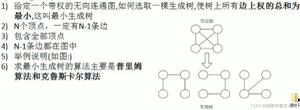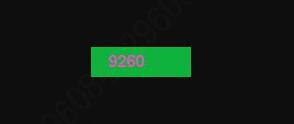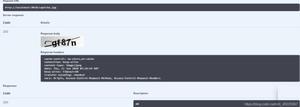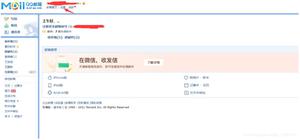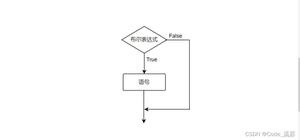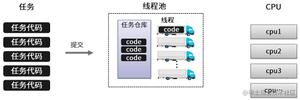java验证码生成的基本流程
1.验证码的生成,我们能够看到是用Graphics对象画出来的。对象我们必须要获得Graphics对象
1-1、Graphics对象的获取,要通过BufferedImage获得
<span style="font-size:18px;">int width=100;//确定框框的大小
int height=40;
BufferedImage bfi =new BufferedImage(width, height, BufferedImage.TYPE_INT_RGB);
Graphics g=bfi.getGraphics();//获得Graphics对象就可以画图</span>
1-2、一般的验证码背景框都是白色的
<span style="font-size:18px;"> //1,设置背景(白框框)
g.setColor(Color.WHITE);//白色的画笔
g.fillRect(0, 0, width, height);//画矩形矩形框框</span>
1-3、保存数据(后台验证使用)和设置字体样式(美观)
String str="";//保存数据
Random rom=new Random();
//设置字体的大写与粗
g.setFont(new Font("a", Font.BOLD,20));
1-4、生成具体的数值,以及随机生成的颜色
for(int i=0;i<4;i++){
int num=rom.nextInt(10);//生成的随机数
g.setColor(new Color(rom.nextInt(256),rom.nextInt(256), rom.nextInt(256)));//设置画笔的颜色(随机)
g.drawString(""+num, 20*i, 20+rom.nextInt(10));//画出线,x的位置每一之间增加20,y的坐标以20一条线,在线上或者是线下
//PS:位置需要明确些,
}
1-5、一般的数字容易被其他软件直接识别出来,为了防黑。稍微加一点干扰线
//画出一些干扰线
for (int i = 0; i < 10; i++) {
g.setColor(new Color(rom.nextInt(256),rom.nextInt(256), rom.nextInt(256)));//设置画笔的颜色(随机)
g.drawLine(rom.nextInt(100),rom.nextInt(40), rom.nextInt(100), rom.nextInt(40));//位置也是随机,x,y的值不要超过矩形框框
}
1-6、销毁Graphics对象和存储图片
<span style="white-space:pre"> </span>g.dispose();//销毁对象
ImageIO.write(bfi, "JPEG", res.getOutputStream());//图片用字节流 直接得到 PS::: res是Servlet里面的。
这样验证码就生成了,那我们如何导入到前台去呢
2、具体实现
前台代码呈现():
<body>
<h1>用户登录</h1><br/>
用户名:<input type="text" name="nametext"/><br/>
密 码:<input type="text" name="psd"/><br/>
请输入验证码:<input type="text"/>
<img <span style="color:#ff0000;">src="/IMG/immg" </span>id="aid"/><a href="javascript:flush()" >看不清</a>
</body>
src的地址来源就是从后台发过来的。路径是很有意思的。
2-1步骤
项目里面
myeclipse --> src -->new Servlet 出现如下:

点击----》next 出现如下页面:

这个配置会自动到项目里面的web-INF文件夹里面web.xml。这个框框里面的值就是前台 src里面写的需要访问的路径,----> 点击完成就行了。
自动了。生成如下界面:

在这里就可写之前的代码。但是需要注意,我们必须通过覆盖这个方法才能有效:
protected void service(HttpServletRequest req, HttpServletResponse resp)//自动生成 输入 <span style="font-family: Arial, Helvetica, sans-serif;">service 补全,自动生成</span>
throws ServletException, IOException {
// TODO Auto-generated method stub
super.service(req, resp);
}
具体的代码如下:
package cn.hncu.com.servlet;
import java.awt.Color;
import java.awt.Font;
import java.awt.Graphics;
import java.awt.image.BufferedImage;
import java.io.FileOutputStream;
import java.io.IOException;
import java.util.Random;
import javax.imageio.ImageIO;
import javax.servlet.ServletException;
import javax.servlet.ServletRequest;
import javax.servlet.ServletResponse;
import javax.servlet.http.HttpServlet;
import javax.servlet.http.HttpServletRequest;
import javax.servlet.http.HttpServletResponse;
public class Imgdemo extends HttpServlet {
@Override
public void service(ServletRequest req, ServletResponse res)
throws ServletException, IOException {
int width=100;//确定框框的大小
int height=40;
BufferedImage bfi =new BufferedImage(width, height, BufferedImage.TYPE_INT_RGB);
Graphics g=bfi.getGraphics();//获得Graphics对象就可以画图
//1,设置背景(白框框)
g.setColor(Color.WHITE);//白色的画笔
g.fillRect(0, 0, width, height);//画矩形矩形框框
//2,具体生成随机数
String str="";//保存数据
Random rom=new Random();
//设置字体的大写与粗
g.setFont(new Font("a", Font.BOLD,20));
//画出具体的图片
for(int i=0;i<4;i++){
int num=rom.nextInt(10);//生成的随机数
g.setColor(new Color(rom.nextInt(256),rom.nextInt(256), rom.nextInt(256)));//设置画笔的颜色(随机)
g.drawString(""+num, 20*i, 20+rom.nextInt(10));//画出线,x的位置每一之间增加20,y的坐标以20一条线,在线上或者是线下
//PS:位置需要明确些,
}
//画出一些干扰线
for (int i = 0; i < 10; i++) {
g.setColor(new Color(rom.nextInt(256),rom.nextInt(256), rom.nextInt(256)));//设置画笔的颜色(随机)
g.drawLine(rom.nextInt(100),rom.nextInt(40), rom.nextInt(100), rom.nextInt(40));//位置也是随机,x,y的值不要超过矩形框框
}
g.dispose();
ImageIO.write(bfi, "JPEG", res.getOutputStream());//图片用字节流 直接得到
}
}<span style="font-family: Arial, Helvetica, sans-serif; background-color: rgb(255, 255, 255);"> </span>
前台代码:
<%@ page language="java" import="java.util.*" pageEncoding="UTF-8"%>
<%
String path = request.getContextPath();
String basePath = request.getScheme()+"://"+request.getServerName()+":"+request.getServerPort()+path+"/";
%>
<!DOCTYPE HTML PUBLIC "-//W3C//DTD HTML 4.01 Transitional//EN">
<html>
<head>
<base href="<%=basePath%>">
<title>My JSP 'img.jsp' starting page</title>
<meta http-equiv="pragma" content="no-cache">
<meta http-equiv="cache-control" content="no-cache">
<meta http-equiv="expires" content="0">
<meta http-equiv="keywords" content="keyword1,keyword2,keyword3">
<meta http-equiv="description" content="This is my page">
<!--
<link rel="stylesheet" type="text/css" href="styles.css">
-->
<script type="text/javascript">
function flush(){
var text=document.getElementById("aid");
var date =new Date();
var tt=date.getTime();
text.src="/IMG/immg?"+tt;
}
</script>
</head>
<body>
<h1>用户登录</h1><br/>
用户名:<input type="text" name="nametext"/><br/>
密 码:<input type="text" name="psd"/><br/>
请输入验证码:<input type="text"/>
<img src="/IMG/immg" id="aid"/><a href="javascript:flush()" >看不清</a>
</body>
</html>
对于前台代码需要解释一下:
当我们的的验证码传过来看不清的时候需要刷新,而浏览器有自动记忆的功能,当没有新的参数传进来的时候,浏览器是不会刷新的,所以我们需要手动的去写一个js控制参数传,我们知道,只有时间是不会变化的,所有我们采用时间来作为参数传递。
PS:自己坑了一段时间的问题:验证码的路径问题。前端的“/”表示 tomcat目录,在项目内部,如web.xml中“/”表示该项目下。也就是说,他们两个的目录差了一层。
最后附上自己在测试的时候的代码以及修改数字形状的问题,如改成2D的效果更不错。都有很明显的记录。
package cn.hncu.com;
import java.awt.Color;
import java.awt.Font;
import java.awt.Graphics;
import java.awt.Graphics2D;
import java.awt.geom.AffineTransform;
import java.awt.image.BufferedImage;
import java.io.FileNotFoundException;
import java.io.FileOutputStream;
import java.io.IOException;
import java.util.Random;
import javax.imageio.ImageIO;
import org.junit.Test;
public class Demoimg {
@Test
public void Test() throws Exception{
String str="9988";
int width=60;
int height=30;
//通过bufferedImage对象获得Graphics对象
BufferedImage bfi=new BufferedImage(width, height, BufferedImage.TYPE_INT_BGR);
Graphics g=bfi.getGraphics();
g.drawString(str, 10,10);
g.dispose();//类似于IO中的关流
ImageIO.write(bfi , "JPEG", new FileOutputStream("F:\\ex\\a.jpg"));
//bfi为画布,将画布写到文件中JPEG为指定文件格式
}
@Test
public void Test2() throws Exception{
int width=100;
int height=40;
BufferedImage bfi =new BufferedImage(width, height, BufferedImage.TYPE_INT_RGB);
Graphics g=bfi.getGraphics();//获得Graphics对象就可以画图
//1,设置背景(白框框)
g.setColor(Color.WHITE);//白色的画笔
g.fillRect(0, 0, width, height);
//2,具体生成随机数
String str="";//保存数据
Random rom=new Random();
//设置字体的大写与粗
g.setFont(new Font("a", Font.BOLD,20));
//画出具体的图片
for(int i=0;i<4;i++){
int num=rom.nextInt(10);//生成的随机数
g.setColor(new Color(rom.nextInt(256),rom.nextInt(256), rom.nextInt(256)));//设置画笔的颜色(随机)
g.drawString(""+num, 20*i, 20+rom.nextInt(10));//画出线,x的位置每一之间增加20,y的坐标以20一条线,在线上或者是线下
//PS:位置需要明确些,
}
//画出一些干扰线
for (int i = 0; i < 10; i++) {
g.setColor(new Color(rom.nextInt(256),rom.nextInt(256), rom.nextInt(256)));//设置画笔的颜色(随机)
g.drawLine(rom.nextInt(100),rom.nextInt(40), rom.nextInt(100), rom.nextInt(40));//位置也是随机,x,y的值不要超过矩形框框
}
g.dispose();
ImageIO.write(bfi, "JPEG", new FileOutputStream("F:\\ex\\b.jpg"));
}
//画出可以变化的情况
//字体能够旋转的验证码
@Test
public void Test3() throws IOException{
int width=100;
int height=40;
BufferedImage bfi =new BufferedImage(width, height, BufferedImage.TYPE_INT_RGB);
Graphics g=bfi.getGraphics();
Graphics2D g2d=(Graphics2D) g;
Random rom =new Random();
g2d.setColor(Color.WHITE);//设置画笔的颜色
g2d.fillRect(0, 0, width, height);//画出一个白色的矩形
g2d.setFont(new Font("a", Font.BOLD, 20));
for(int i=0;i<4;i++){
int num=rom.nextInt(10);
//旋转,放缩
AffineTransform aff=new AffineTransform();
//aff.rotate(Math.random(), i*18, height-20);//旋转
aff.scale(0.6+Math.random(), 0.6+Math.random());//缩放
g2d.setColor(new Color(rom.nextInt(256),rom.nextInt(256),rom.nextInt(256)));
g2d.setTransform(aff);
g2d.drawString(""+num, i*18, height-25);
}
g2d.dispose();
ImageIO.write(bfi, "JPEG", new FileOutputStream("F:\\ex\\c.jpg"));
}
}
以上就是关于java生成验证码的基本流程,还附带了自己亲自的测试的代码,希望这些都能帮到大家。
以上是 java验证码生成的基本流程 的全部内容, 来源链接: utcz.com/p/208607.html

